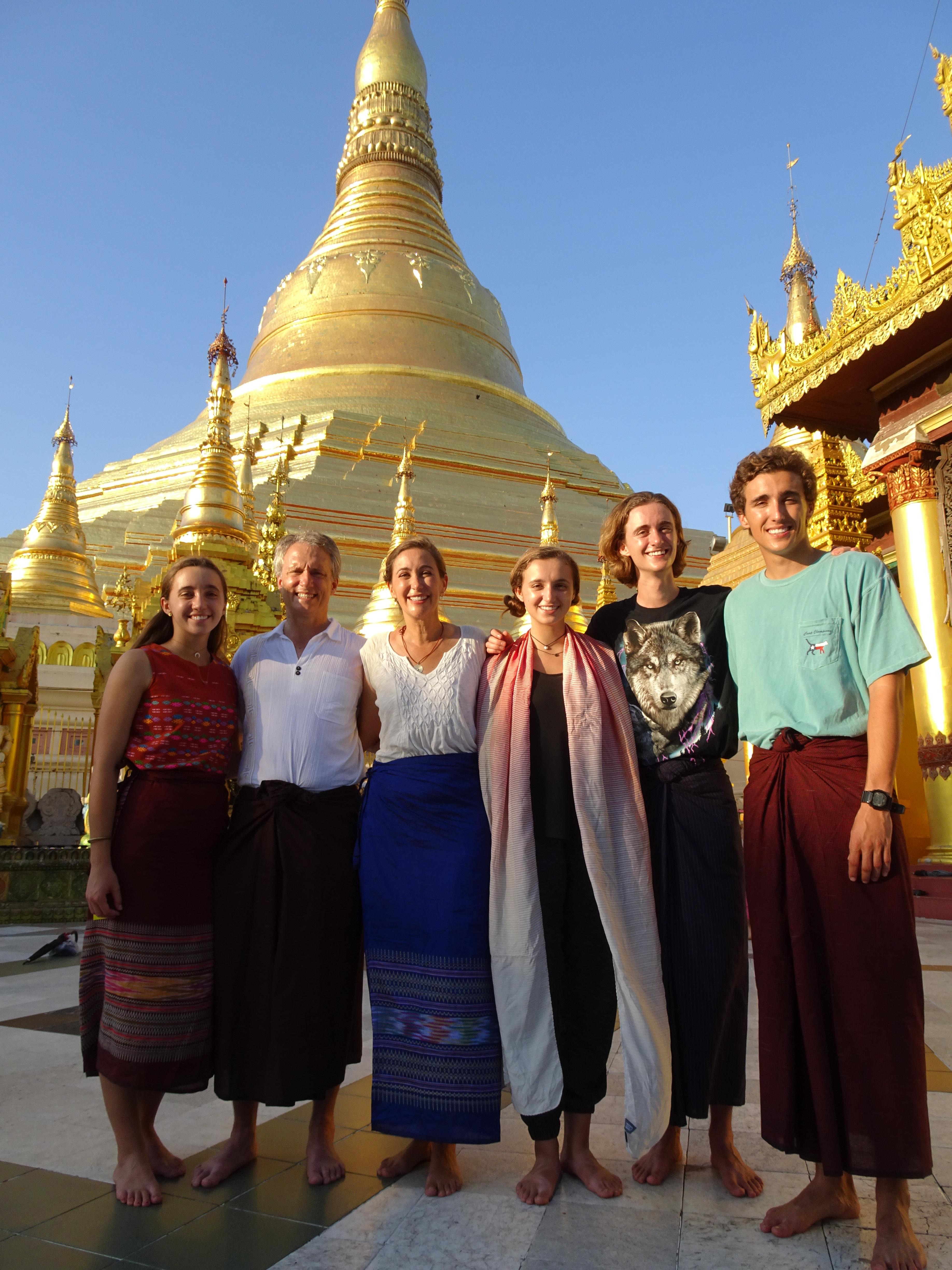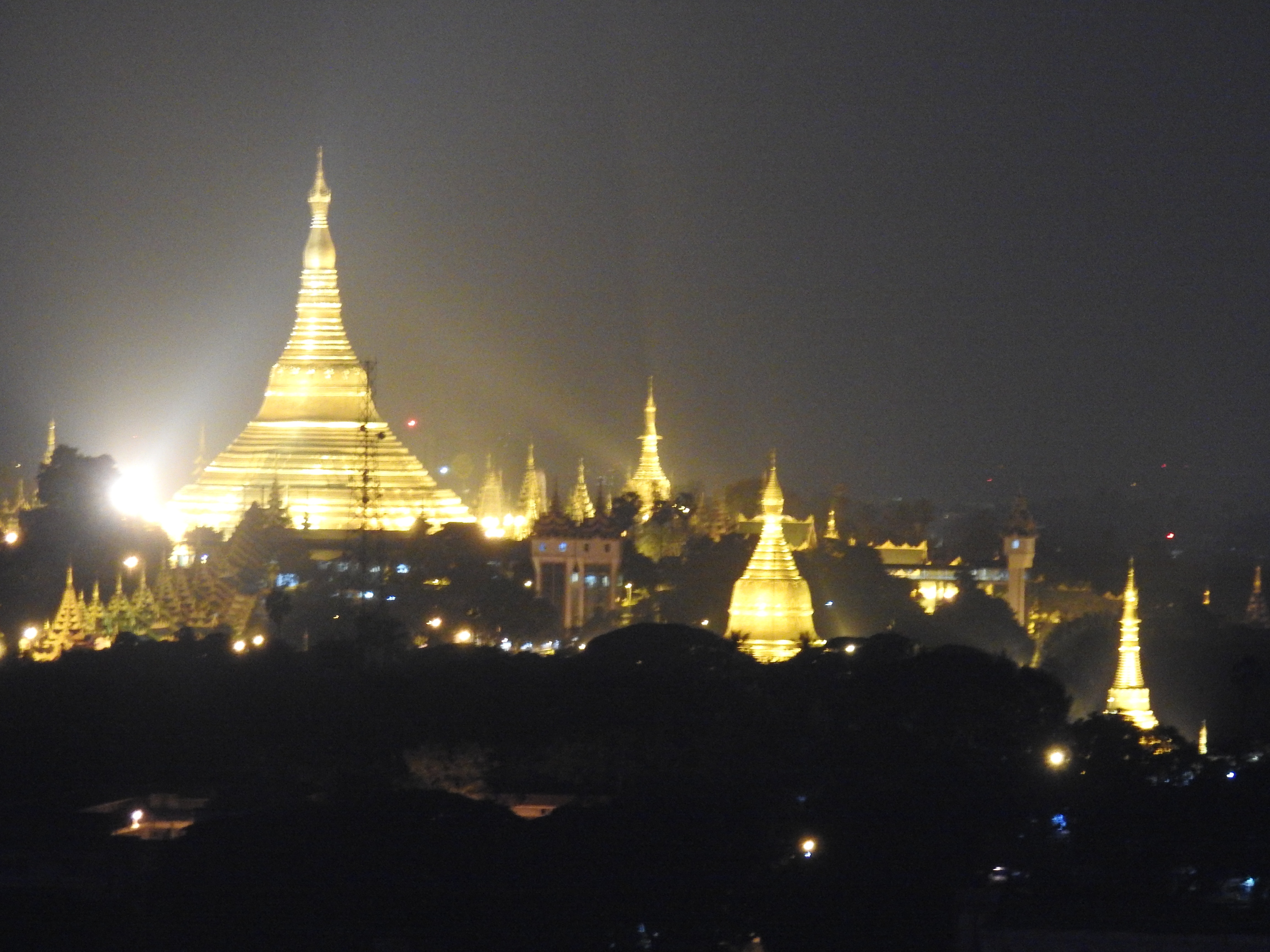Redeeming Yangon: the Shwedagon Pagoda
November 21, 2016

I mentioned yesterday that Yangon has one redeeming site: the Shwedogon Pagoda. It is both audacious and intimate. We saw tourists, but also devout believers sitting in adjoining shrines and singing.

The Pagoda is actually a series of structures with a huge, gold stupa (a structure that has no openings) in the center. Around this stupa are statues, small temples and miscellaneous towers.

I like this one. No, I do not think it represents the Hulk.

Each day of the week has its own miniature shrine (“Monday Corner”, “Friday Corner”) where people would pour water over a Buddha statue as part of a ritual washing.

We could not divine the exact purpose of this ritual. We did have a tour guide offer to help us understand all the intricacies of this massive place, but one look at the faces of our children told me that this was not the time to maximize information. Instead, we opted to maximize our freedom of movement.
I have mixed feelings about the right way to discover a place like this massive site. There are pros and cons to going with a guide. Certainly, a guide provides information that we would have no other reliable way to obtain. On the other hand, a guide tends to direct our attention, making us more passive observers. When we are traveling without a guide, we are seeing everything with active eyes. We choose what to look at and engage in speculation of its purpose. When we are at our best, we then go home to the Internet and find the answer to our questions. In this way, we are much more likely to retain the information.
So I later learned that Monday Corner is reserved for people born on Monday and that washing the Buddha statue gives you luck and good karma.
We also learned that the facility is 2500 years old and is over 300 feet high.
One area promised the Buddha’s tooth.

Wait - this just in – it features a replica of the tooth. I would think in the “holy relic” hierarchy, a replica tooth would be of little to no value, but I guess I would be very about that.
To enter the pagoda, we ascended almost 100 steps and paid an entrance fee. Given the fact that the Baskin males all had shorts on, we also needed to rent longyi, the traditional garb of the Myanmar male. We looked pretty snappy. The guards who loaned us the longyi were impressed that I could properly tie my own, though amused that my technique was weak.
Walking the site made me think about the different effects that religious architecture can achieve. The great European gothic churches reflected the view of a powerful and distant God that commands awe. Also, most early Catholic churches held that believers could not connect directly with the divine, but needed intermediaries (priests). These churches draw the eye up to the heaven and make the viewer feel comparatively small. The Reformation (and Protestantism) led to lower ceilings because the believer can connect directly with God.
The Shinto shrines we went to were low on architecture and long on nature and beauty. There is a pantheist element (everything is divine) to Shintoism, so this makes perfect sense.
The Buddha cave we went to felt intimate with many corners for prayer or meditation, suggesting that the Buddha was right there with you. Even this massive Pagoda broke up into sub-areas that encouraged personal prayer in intimate spaces. The massive tower draws people to the space, but once in the space, you end up going to the smaller areas.
I really do not have a preference. Perhaps my favorite religious structure in the world is massive – the Sagrada Familia in Barcelona. It has a quirkiness and diversity to it while also borrowing from the grandeur of the gothics.


But I have loved visiting the Shrines and Temples of Japan and Myanmar as well.
Of course, these are all places that have been built with intentionality and passion, imbuing them with beauty and often evoking awe. I always recommend to travellers to visit places of worship wherever they go. In fact, here is my “to do” list for any place:
- Go to a place of worship
- See whatever art they are most known for
- Eat with the locals
- Walk as much as possible.
This list has served us well, providing a great overview of the various places we have visited.

We now will head to Singapore for the next leg of our journey.
Steve Sir
